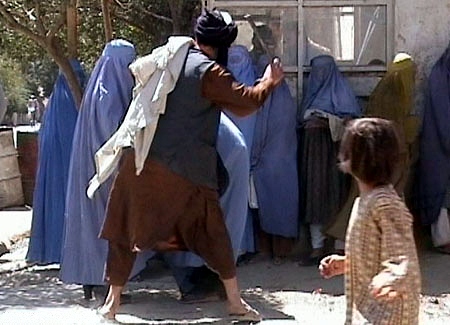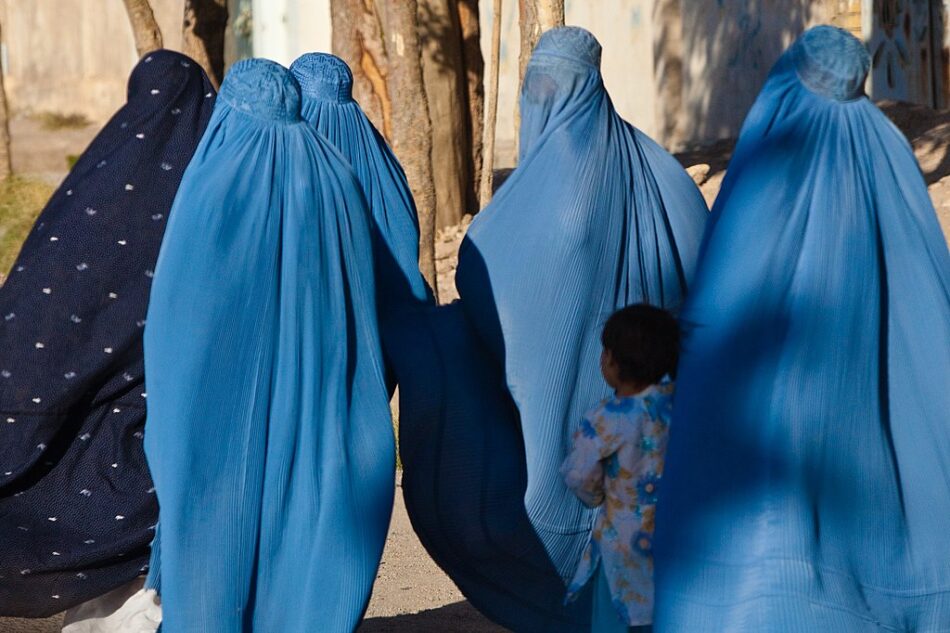Afghanistan’s once busy, colorful streets are now empty, the people that filled them in hiding. Banks, supermarkets, and schools have been shut down for over a month. Many Afghans are afraid to leave home in fear of losing their lives, leaving them unable to access money or food. This is life after the Taliban seized power in Kabul after the American army withdrew. Now Afghan American women in the United States are struggling to help their families survive in this war torn country.
“It’s a very bad situation there,” said an Afghan American woman, 35, of Fresh Meadows, Queens who did not want to give her name because she feared retaliation. “All the people have no food, no money, the bank is closed.”
Over a month after the Taliban invaded Afghanistan, banks remain closed because they lost international aid. Seventy five percent of Afghanistan’s public spending is financed through international aid grants, according to the World Bank. Since the U.S. withdrawal from Afghanistan, foreign currency and US-led international aid has been blocked. This has added to the collapse of Afghanistan’s financial infrastructure.
While Western Union was reported to resume money-transfer services to Afghanistan in the past month, the payout is only available mostly in Kabul, the epicentre of the takeover where locals are in hiding. One Afghan American woman has been able to send money to her family through an underground exchange market.
“I have to do it a really back, back, back way,” said Maryam Naziri, 33, of Austin, Texas. “There are these underground exchange markets where you send your money to an Afghan store, and then with a code your family will go and pick it up. I’ve been sending [money to] my grandmother, sometimes my aunt, because my young cousins are in hiding.”
The Taliban has killed those who resisted their rule in the streets, leaving civilians afraid to go outside.
“All Afghan people are sad for our country” said the Afghan American woman of Fresh Meadows. “It’s not a good situation. Other countries aren’t coming for help.”
The Taliban are a predominantly Pashtun Islamic fundamentalist group, originally consisting of students trained in Islamic religious schools, that started to gain influence in the 1990’s after the withdrawal of Soviet troops from Afghanistan, taking over the country from 1996 until the U.S. invasion in 2001. The mission of the Taliban was to restore a conservative interpretation of Sharia law. By 1998, the Taliban were in control of almost 90% of Afghanistan, enforcing harsh ruling that neglected social services, eliminated women from public life, employment, education, public executions of murderers and adulterers, amputations for those accused of theft, and banned music and television.
Under the Taliban’s ruling, Afghanistan became a breeding ground and sanctuary for Islamic militants including Osama bin Laden, leader of al-Qaeda and organizer of the 9/11 attacks, the largest terror attack ever conducted on U.S. soil. The attacks led to the U.S. launching of the Afghanistan war in October of 2001, making counter-terrorism the focus of foreign policy and beginning the longest war in the history of the United States, ending just two months ago, after a peace agreement was struck during the Trump administration with the Taliban in February of 2020 to withdraw U.S. troops from Afghanistan.
“The Taliban don’t really have a sense of governance,” said Dr. Bahar Jalali, Afghan historian and founder of the first Gender Studies program in Afghanistan. “This is not a group that knows about economic policy and fiscal policy… they haven’t thought about all these things.”
For the past 20 years, after the Taliban was removed from power in 2001, Afghan women made valiant strides. They occupied schools, higher education, medicine, music, media, and their presence filled the streets. In 2018, the literacy rate for females in Afghanistan was at 30 percent, according to a recent UNESCO report. Now, women and girls haven’t been to school for over two weeks.
“We cannot go outside because of the threat to our lives,” said Fereshta Sediqi, 22, a student at Kabul University who is currently unable to attend. “I can no longer continue my education and my dreams have vanished. Our goals cannot be reached anymore.”

This photo is caught from video that was recorded by RAWA in Kabul using a hidden camera. It shows two Taliban from department of Amr bil Ma-roof (Promotion of Virtue and Prevention of Vice, Taliban religious police) beating a woman in public because she has dared to remove her burqa in public. Photo courtesy of Wikipedia
Others in Afghanistan have had to change locations frequently, leaving them unable to work.
“My family has had to change location many times or stay in hiding in fear of losing their lives” said Nazari.
Being in hiding without the ability to work and access banks or supermarkets has led to mass hunger issues. One in three people in Afghanistan are currently going hungry. That’s 14 million people, including 2 million children that are malnourished, with requests for food assistance rapidly increasing since August 15.
“They [ate] three times a day, now they try to eat one time a day,” said the Afghan woman of Fresh Meadows. “They only eat bread, sugar, and tea.”
Some Afghan Americans, like Nazari, are fighting for their families to be evacuated so they can restart their lives.
“I’ve been working really hard to find a way to evacuate them, but I haven’t had any luck yet,” said Nazari. “I have sponsored them myself. I filled out a humanitarian [form] for them. I am praying that they will get accepted. I want the oppression to end with me in my family. We have paid our dues. We have been through so much.”


